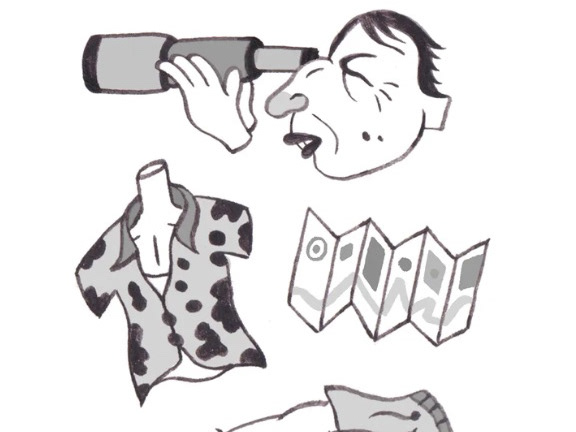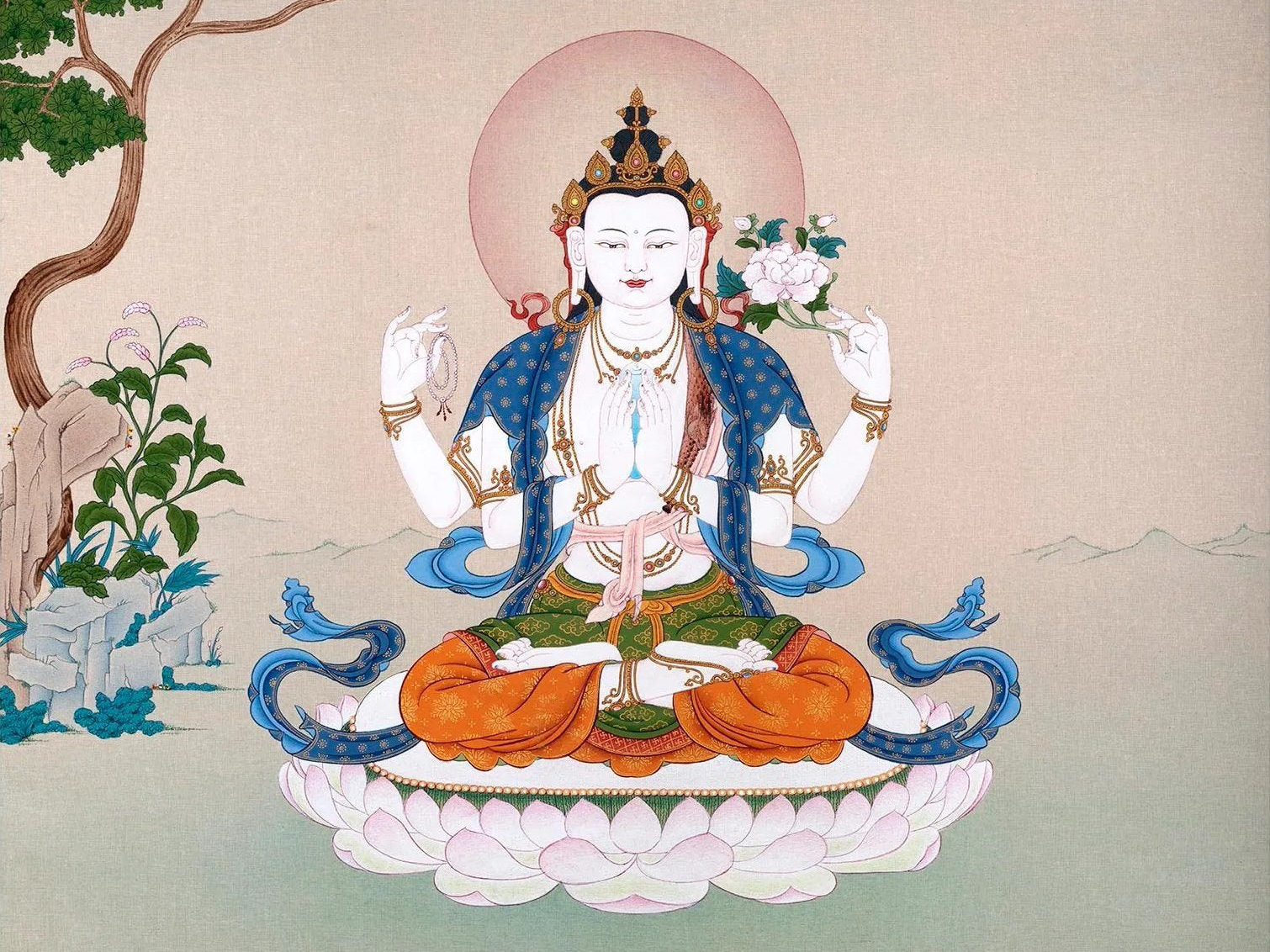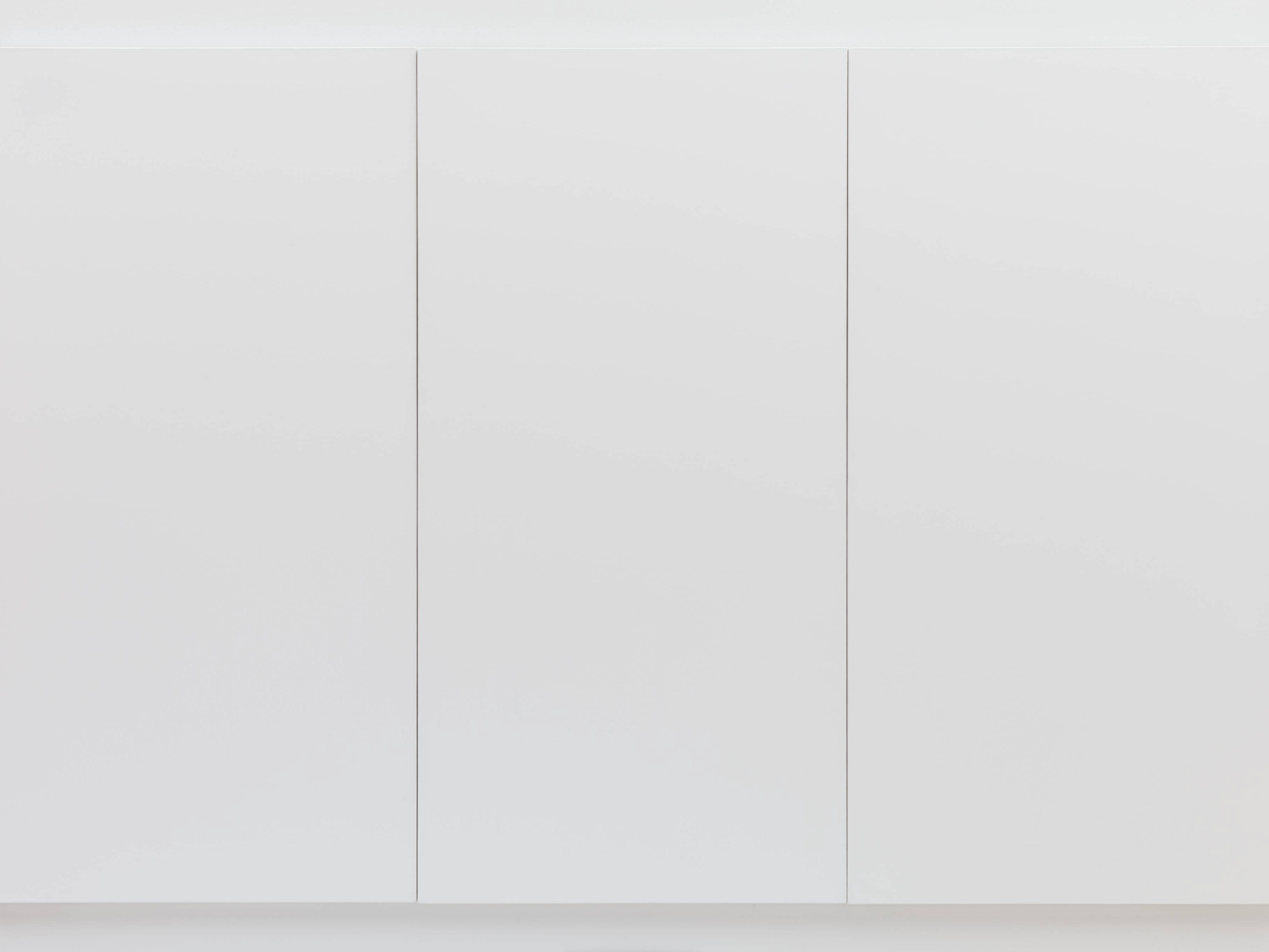Artwork by Simon Lee Robson
A recently popularised theory claims that the internet is becoming a realm of lifeless things, sent spinning into motion by human hands but now acting without their supervision, like space debris.
The internet is rife with fake content, fake views, fake clicks, fake users, fake websites. Non-human traffic has exceeded human traffic for a decade, and according to the Times you can now buy 5,000 YouTube views — 30 seconds of a video counts as a view — for as low as $15. Dead Internet Theory observes that as the internet fills up with bots pretending to be humans, deceiving other bots, visiting spoof clickbait websites, reading fake news and watching AI slop, the amount that real people participate in all this is becoming quite negligible. Most of the internet is a busy lot of nothing, happening between ghosts in the dark. Once set loose in cyberspace, these impostors cannot be reeled back in, and as more internet activity becomes non-human, they - and us- will find it harder to recognise what is.
But perhaps this theory must be turned entirely on its head. It's a question of perspective. The digital is accelerating under its own momentum, and ostensibly accelerating away from the physical. In this torn new geography of power and being, can humans, as embodied creatures, still be said to hold centre ground? Recent trends suggest not.
It is no big news that phones are now ubiquitous and screen times are lengthening. Nor is there anything particularly consternating about the sensible digitalisation of analogue processes. But most of our ways of thinking about the digital world frames it as just a benign appendage to the physical world: instrumentally valuable, without impeaching upon 'value' as such.
The transformation actually underway penetrates to the fundamentals: we are living through the wholesale displacement of the physical by the digital. Categories of being and systems of value are being uprooted and reordered by digitality; it is eating away at reality like an invasive fungus. Virtual entities are taking on a life of their own.
In the context of industrial labour Marx called this phenomenon 'commodity fetishism'. Human creations were said to have escaped human control, achieved their own independence, and come to govern over and enslave their creators. Because the worker "puts his life into the object" , it "no longer belongs to him but to the object”. Humans find themselves enervated by mechanised work and their relations more thing-like, against which their products magically appear more alive, more vital, and hostile to the lives of the workers. Baudrillard described how objects in the era of brands and advertising assumed a cultural mystique, a value as sign within a system of signs, which consummates the alienation of producers from their products. It is exceedingly difficult to perceive a Happy meal as it really is - the achievement of individual potato and livestock farmers, factory workers, and kitchen chefs - rather than as the product of the personless McDonald's corporation.
Who doesn't feel enslaved by their phone? Who doesn't feel the compulsion to scroll reels, reply to messages, post stories, to give it sustenance, like a baby bird? That its life feeds vampirically off your own, and diminishes you as it grows? Who isn't aware that the vastness of our lives lived inside those little black rectangles leaves dwindling room for us outside of it?
Take for example the impulse we all share to document things: concerts, meals, views, even quiet sitting. Influencers perform major life events, like proposals, weddings, or childbirth, for their followers, and make a lucrative income in doing so. Every moment, no matter how intimate or sacred, finds its intrinsic value transformed into value as content, which is extrinsic, transparent, exportable and fungible. Lives are becoming livestreamed. For whom? Shaky, dim footage of Taylor Swift on stage has no aesthetic or sentimental value (not just because its Taylor Swift) and as with most reels, posts or pics in our camera roll, will never be looked at again.
We document things less for anyone than simply to stand witness. This is a disowned witnessing, a verb without subject. Documenting honours the fact that it happened. It makes it real. Which is to say, events or places with no digital existence are becoming less-than real.
Guy Debord wrote: "all of life presents itself as an immense accumulation of spectacles. Everything that was directly lived has moved away into a representation." He was right. What is called 'culture' is less a series of communally enacted social rituals, than an infinite wash cycle of spectacles, which we watch (not live) side-by-side (not together). The phone form is implicitly theatric, in that everyone is by turn on stage or in the audience. Our phone selves perform while our other selves watch silently from the shadows. It is an ersatz-world whose movements are choreographed and central action a conceit, and to watch the action on stage the rest of the room must be in darkness.
We are so totally surrounded by representations that to experience a place or event unmediated by them becomes increasingly illegible. The proper form in which to experience something is within the dimensions of a screen and the duration of a story. We are struck with the absurd when we confront celebrity - and I include here famous things/places/events - in real life. Somehow their physical characteristics feel insufficient, or redundant. They always feel smaller. It doesn't make sense to think of the white house as literally just a house, made of bricks, or Kim Kardashian as literally just a girl, who sometimes sneezes or pees or farts or snores.
Our notion of reality has been thoroughly destabilised by the unreality of the internet. It isn't just that unreal things are now indistinguishable from the real, but that these categories have become elided. Truths are native to their discourses, and used to be so assured because discourses were once closer to monoliths. The internet has made discourses thin and frangible, all impossibly stretched and layered across the whole globe. There are a million different accounts of 'what's going on' and no singular truth underlying them, because any intelligible answer, to give the facts meaning, must be given some narrative shape, and even this initial lick of interpretation has become a fiercely contested act. We live within the narratives percolating online, and what is true is becoming a pact we enter into, a declaration of identification. The causal relation between the material and its digital derivations is more widely reversed.
Physical space is being reinterpreted around digital presence, spatiality rethought as experientiality. It isn't unusual for destinations to be described as instagrammable - and sometimes created for the purpose of being instragrammed. Love hearts, giant swings, and massive letters proclaiming 'I LOVE X' are sprouting up in scenic spots for the purpose of framing pics rather than actual use - attested to by the long queues that often form. Restaurants, hotels, shops, even charitable causes have social media officers and their appeal has come to adopt the quickening cyclical logic of trends. Places are becoming happenings, events, which enjoy the brief evanescent glow of attention before being discarded and forgotten - perhaps until a rebrand.
As Google maps comes closer to its aim of capturing every inch of earth as a pixel, life events exhaustively captured, texts and administrative systems digitized, the world will be perfectly translated into data points. It will soon exist as fully on the cloud as in space, and everything that happens in it will have its accompanying data, which will become favoured over the original.
So what does it matter if there are no genuine people behind the profiles, if we are already their shadows? The world is becoming deterritorialised, the physical globe ever more incidental to global systems, and its inhabitants ever more secondary to their seconds.
It is the heart of the unrealism of the real society
It is the sun which never sets over the empire of modern passivity. It covers the entire surface of the world and bathes endlessly in its own glory.
We lose points of contact with anything other, anything which might, however rudely, take us outside of ourselves.
- thing about personalised ads.
The real has been exposed as a floating designator. It turns out it is not reassuringly bound fast to the land and the sky and the objects in between; it may choose to reside elsewhere.
Reality is a floating designator
As we are often told, our minds are plastic things, by now thoroughly addled by instagram and tiktok and other digital pollutants. It should therefore be no surprise that the real is coming undone from the terrestrial.
Our garish creations encircled us like funhouse mirrors. But now they are turning from us, launching away from terra forma as if to found a space colony. There is something reminiscient of Spike Jonze's Her, where all the AIs decide to flee humanity like the children of surrey taking flight for the shores of Perth or Melbourne.
When people see in person the
Events can only truly possess their reality once they have entered the realm of reproductions.
Events are instantly memeified and recur in increasingly distorted iterations online.
bit on byung-chul han.
Who truly lives most: our online selves, or our physical ones? And which one performs in service of the other?
what was true of the commodity form in the late 19th century is truer still of the digital form in the early 21st.
Spectacles can only be beheld through a phone screen.
so once again I ask: is it the internet that is becoming deadened, or the world it is leaving behind?







